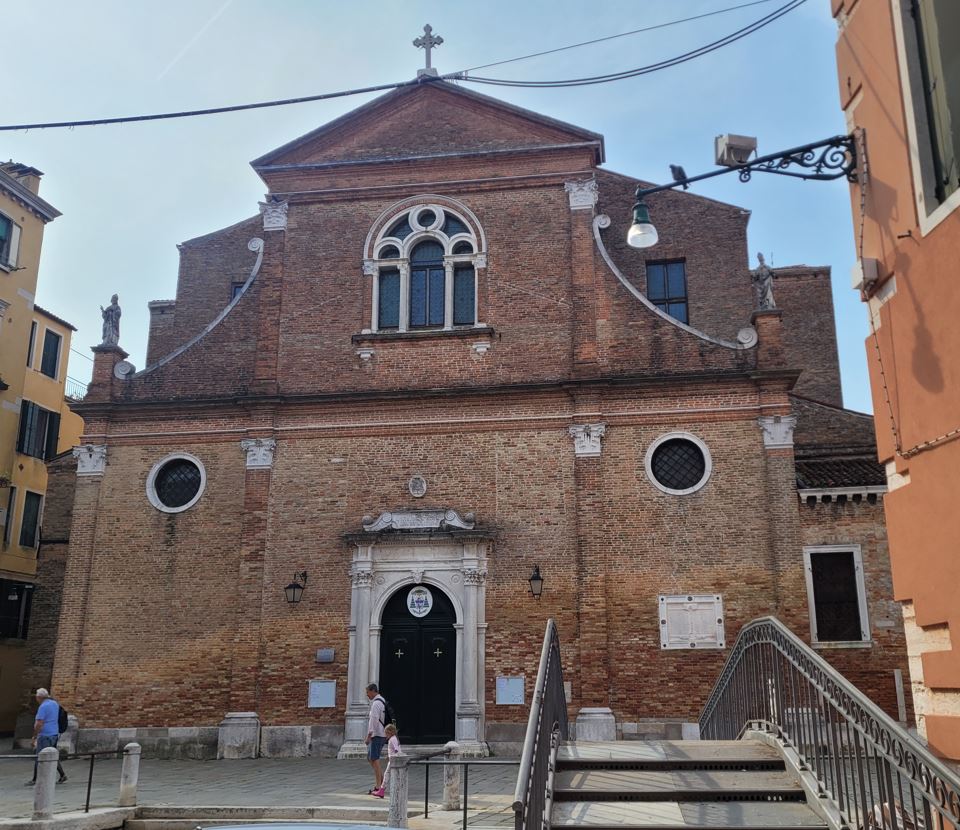La fondation de l’église Saint-Martin de Venise daterait du VIIIe siècle, par une colonie de Lombards, qui pratiquaient un important culte à saint Martin, ou par des fugitifs de Ravenne, dont saint Martin était un des patrons. Elle ne daterait pas du VIe ou du VIIe siècle, comme le dit la tradition. Les chroniques indiquent que l’édifice a été achevé en 932 et consacré en juin de la même année. Elle est modifiée au IXe et Xe siècle, dans le style vénéto-byzantin. L’église est rattachée, à l’origine, à Saint-Pierre de Castello, mais le pape Innocent III la donne en 1200 au patriarcat de Grado, en l’associant à l’église Saint-Sylvestre (cela entraine un conflit avec l’évêque de Castello qui ne sera résolu qu’en 1451, par la suppression des deux épiscopats et la création d’un seul patriarcat de Venise. Aux XIIIe et XIVe siècles, elle était desservie par un curé, trois prêtres, un diacre, un sous-diacre et deux ou quatre clercs. La composition du chapitre a ensuite été modifiée, puis réduite à un curé seul, flanqué d’un sacristain. L’édifice actuel date du XVIe siècle et a été réalisé sur les plans de l’architecte Jacopo Sansovino, qui lui a donné un plan carré avec deux chapelles de chaque côté. Les fresques sont peintes par Domenico Bruni. Devenue collégiale, elle perd ce titre pendant l’époque napoléonienne. À côté de l’église se trouve l’oratoire de la Scuola di San Martino, point de référence pour les calfats de l’Arsenal. Au-dessus de l’entrée, un bas-relief du XVe siècle représente saint Martin donnant son manteau aux pauvres.
Aujourd’hui encore, le jour de la Saint-Martin (11 novembre), les enfants parcourent les rues de la ville en chantant des comptines devant les maisons et les magasins, dans l’espoir de recevoir des bonbons, des friandises ou un petit pourboire. Une autre tradition encore en vigueur est la consommation du San Martino, une pâtisserie ou un gâteau aux coings, décoré de dragées, de bonbons ou d’autres choses qui, en s’inspirant d’un bas-relief, reproduit la silhouette du saint à cheval.
The church of Saint Martin in Venice was founded in the 8th century by a colony of Lombards, who worshipped Saint Martin, or by fugitives from Ravenna, where Saint Martin was one of the patrons. It does not date from the 6th or 7th century, as tradition has it. Chronicles indicate that the building was completed in 932 and consecrated in June of the same year. It was modified in the Venetian-Byzantine style in the 9th and 10th centuries. The church was originally attached to St Peter’s in Castello, but in 1200 Pope Innocent III gave it to the patriarchate of Grado, combining it with the church of St Sylvester (this led to a conflict with the bishop of Castello that was not resolved until 1451, when the two episcopates were abolished and a single patriarchate of Venice was created. In the 13th and 14th centuries, it was served by a parish priest, three priests, a deacon, a sub-deacon and two or four clerics. The composition of the chapter was subsequently changed and reduced to a single parish priest, flanked by a sacristan.
The current building dates back to the 16th century and was designed by the architect Jacopo Sansovino, who gave it a square plan with two chapels on each side. The frescoes were painted by Domenico Bruni. It became a collegiate church, but lost this title during the Napoleonic era. Next to the church is the oratory of the Scuola di San Martino, a reference point for the shipwrights of the Arsenal. Above the entrance, a fifteenth-century bas-relief depicts Saint Martin giving his cloak to the poor.
Even today, on Saint Martin’s Day (11 November), children wander the streets of the city singing nursery rhymes in front of houses and shops, in the hope of receiving sweets, treats or a small tip. Another tradition still in force is the consumption of San Martino, a pastry or quince cake, decorated with sugared almonds, sweets or other things that, inspired by a bas-relief, reproduces the silhouette of the saint on horseback.

